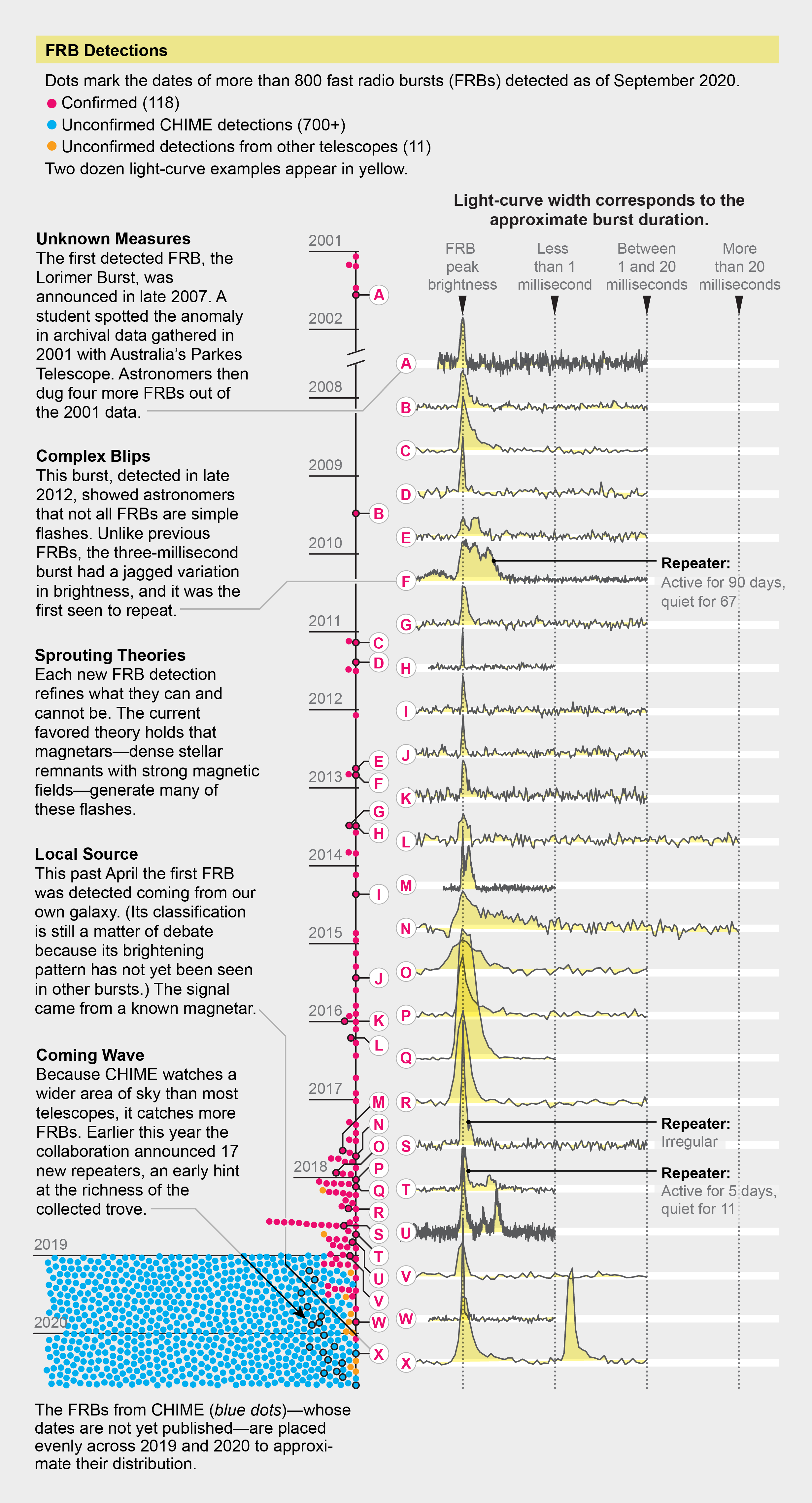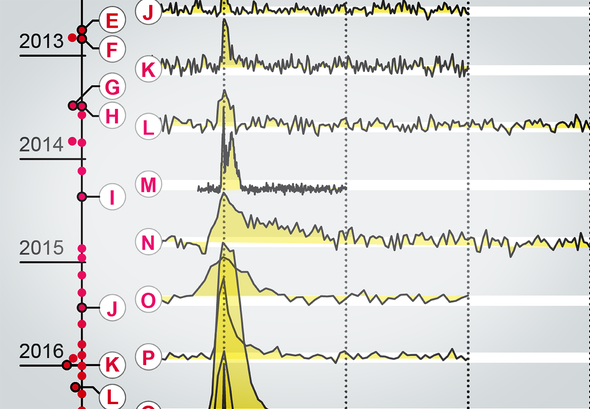New subfields in astronomy tend to follow a particular sequence: Something new is observed. Researchers scratch their heads, then look for more examples of it. At first, each discovery in the new category—say, an exoplanet or gravitational-wave event—generates excitement. Eventually they begin to feel routine. But that is when the science gets interesting: with enough examples, patterns emerge, and inaccurate hypotheses are weeded out.
In 2020 the study of fast radio bursts (FRBs) has crested to that point. For nearly two decades radio telescopes have been detecting these distinctive pinpoints of radio light. They come from distant galaxies and last just a fraction of a second, typically never to reappear. With hundreds of FRBs now recorded, researchers have enough data points to begin drawing conclusions about the universe.
One big player in the search is the Canadian Hydrogen Intensity Mapping Experiment (CHIME), a telescope that has detected more than 700 FRBs since the start of 2019. CHIME researcher Cherry Ng says that with all the new results coming in and with coordination among astronomers growing, “we can all work together to figure out what these are.” Here's the story of this field so far.



